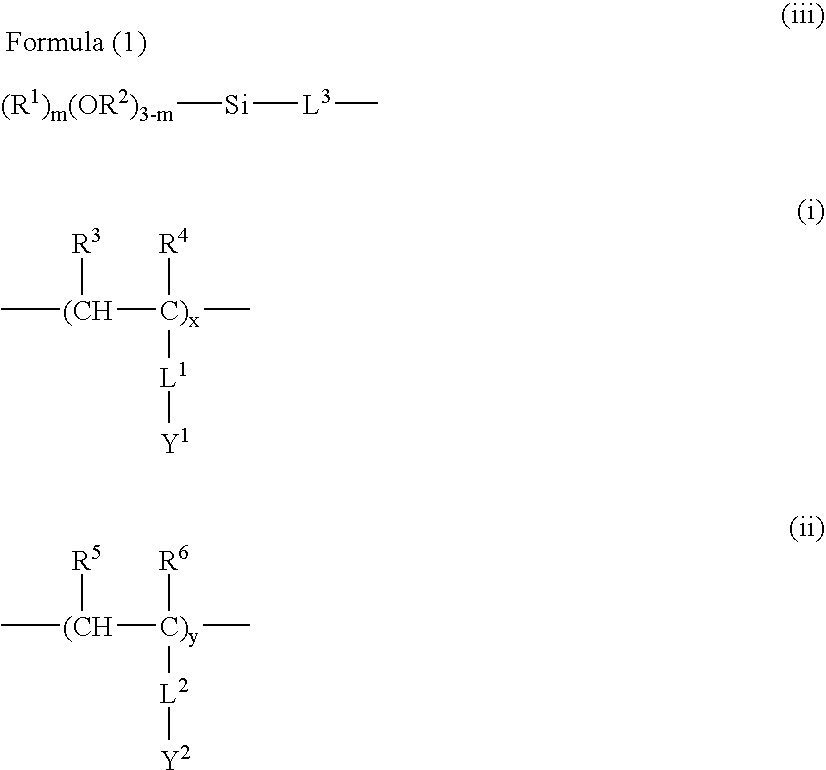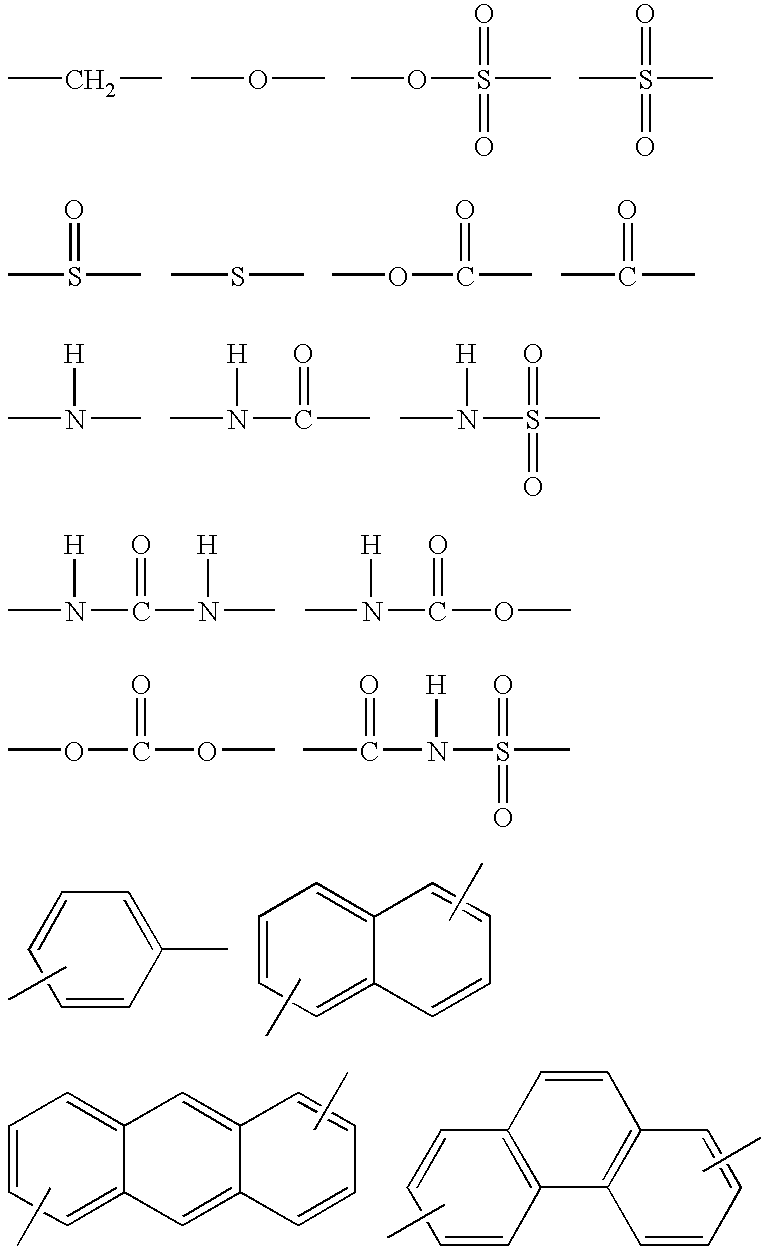Hydrophilic film forming composition and hydrophilic member
a technology of hydrophilicity and composition, applied in the field of hydrophilic film forming composition and surface hydrophilicity member, can solve the problems of poor surface functions and characteristics of products and members, lowering light transmittance through them, and products and members having an inorganic surface such as glass or metal, so as to achieve effective crosslinking, high film strength, and high hydrophilicity
- Summary
- Abstract
- Description
- Claims
- Application Information
AI Technical Summary
Benefits of technology
Problems solved by technology
Method used
Image
Examples
example 1
[0156]A float sheet glass (thickness 2 mm), most popular transparent sheet glass was prepared, and the surface of the sheet glass was hydrophilicated through glow treatment. Then, a hydrophilic layer-forming coating liquid having the following composition was applied onto it in a mode of bar-coating, and dried in an oven at 100° C. for 10 minutes to form a hydrophilic layer having a dry coating amount of 0.1 g / m2, thereby producing a hydrophilic member. The surface free energy of the hydrophilic member was 86 mN / m, and its surface had high hydrophilicity. The visible light transmittance of the hydrophilic layer was 95% (measured with Hitachi Spectrophotometer U3000).
Sol-gel liquid mentioned below500 gAqueous 5 mas % solution of anionic surfactant mentioned below 30 gPure water450 g
Anionic Surfactant (trade name, Aerosol OT by Wako Pure Chemical Industries):
[0157]8 g of tetramethoxysilane (by Tokyo Chemical Industry), 4 g of a silane coupling group-terminated hydrophilic polymer ment...
examples 2 to 5
[0170]Hydrophilic films were formed in the same manner as in Example 1, for which, however, the specific hydrophilic compound (Compound 1) was changed to the specific hydrophilic compound shown in Table 1. The test results are shown in Table 4.
TABLE 1Specific Hydrophilic compoundExample 2Compound 4Example 3Compound 7Example 4Compound 14Example 5Compound 19
example 6
[0171]A float sheet glass (thickness 2 mm), most popular transparent sheet glass was prepared, and the surface of the sheet glass was hydrophilicated through glow treatment. Then, a hydrophilic layer-forming coating liquid having the following composition was applied onto it in a mode of bar-coating, and dried in an oven at 100° C. for 10 minutes to form a hydrophilic layer having a dry coating amount of 0.1 g / m2, thereby producing a hydrophilic member. Its test results are shown in Table 4.
Aqueous 20 mas. % dispersion of colloidal silica (trade name,100 gSnowtex C, by Nissan Chemical)Sol-gel liquid mentioned below500 gAqueous 5 mas % solution of anionic surfactant mentioned below 30 gPure water450 g
Anionic Surfactant (trade name, Aerosol OT, by Wako Pure Chemical Industries):
[0172]8 g of tetramethoxysilane (by Tokyo Chemical Industry), 4 g of a silane coupling group-terminated hydrophilic polymer [(1-1) mentioned above] and 1 g of a specific hydrophilic compound (Compound 10) were ...
PUM
| Property | Measurement | Unit |
|---|---|---|
| hydrophilic | aaaaa | aaaaa |
| hydrophilicity | aaaaa | aaaaa |
| durability | aaaaa | aaaaa |
Abstract
Description
Claims
Application Information
 Login to View More
Login to View More - R&D
- Intellectual Property
- Life Sciences
- Materials
- Tech Scout
- Unparalleled Data Quality
- Higher Quality Content
- 60% Fewer Hallucinations
Browse by: Latest US Patents, China's latest patents, Technical Efficacy Thesaurus, Application Domain, Technology Topic, Popular Technical Reports.
© 2025 PatSnap. All rights reserved.Legal|Privacy policy|Modern Slavery Act Transparency Statement|Sitemap|About US| Contact US: help@patsnap.com



